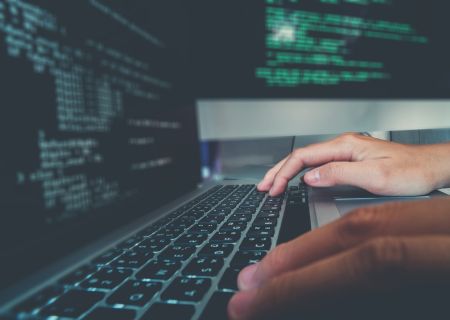Check Instagram, TikTok, or YouTube now. You could spot a new kind of famous face. They never eat, sleep, or mess up. This is an AI influencer, not sci-fi. These AI influencers are changing how brands use online stars.
Big companies and online advertisers noticed this shift. Many businesses now pick computer stars. They use them instead of real people to show off goods. Why should this matter to you?
You might run a business. Maybe you just shop. Or you simply follow online trends. AI stars are changing how we see things. They affect ads, content, and what feels real online.
What Are AI Influencers, Exactly?
An AI influencer is not a human being. Computers create these digital beings. They use special software, CGI, and AI to make them. These digital people look and act like real humans. They often copy how real people act. This includes their voice, facial expressions, and even Instagram posts.
The Magic Behind the Technology
There lies a mix of artificial intelligence and artistic creativity behind every AI influencer. Machine learning algorithms assist in polishing their behavior, and the longer they exist, the more they look natural. Graphic designers utilize 3D rendering and motion capture to create life-like looks. AI assists in generating captions, scripts, and even soundtracks in most instances, causing them to feel conveniently real.
Key Differences from Human Influencers
The major difference? AI influencers lack personal problems, inconsistent behavior, or off-brand opinions. They are totally managed by their creators or agencies so that all their posts reflect brand values. It is a dream come true for marketers to have such consistency.
Quick Tip: To analyze influencers for potential collaborations, see if they’re human or AI-based. Transparency is key, and it may affect consumer trust.
Why are AI Influencers Becoming Popular?
Novelty and Engagement
Humans are inclined toward the novel and odd. AI influencers have a cutting-edge technological layer that makes them effective amidst massive social media clutter. Their individualized esthetics and typically psychedelic creativity enable them to come up with ideas for content that real influencers can’t even imagine a model walking on Mars or participating in a virtual fashion show in the metaverse.
Brand Advantages
For brands, AI influencers have various obvious advantages:
- Complete creative control of the story: No surprise scandals or controversies.
- On-brand messaging: Each post is deliberately crafted.
- Consistency: Human influencers tire, become moody, or distracted. AI influencers do not.
Example: Lil Miquela, who is one of the earliest popular AI influencers, has worked alongside brands like Prada, Calvin Klein, and Samsung, which appreciate her managed yet captivating online presence.
Reach and Scalability
AI influencers are able to reach audiences globally without territorial or physical constraints. Material can be generated rapidly, reshuffled across various platforms, and even translated for other markets.
Pro Tip: When planning global campaigns, think about combining traditional influencers with AI influencers to gain the widest reach and innovation.
Major AI Influencers and Their Effects
Spotlight on Key Personalities
- Lil Miquela: Eagerly dubbed as the first, she has millions of followers and has even dropped music tracks.
- Imma: A popular Japanese virtual model who boasts a pink bob haircut and has worked with high-end fashion brands.
- Shudu Gram: Nicknamed the world’s first digital supermodel, Shudu has already modeled for high-end fashion brands.
Success Stories and Campaigns
From Balmain’s digital model campaign to Samsung’s futuristic ads, brands are already enjoying solid returns by collaborating with AI influencers. Virtual artists and creators are also coming into entertainment, indicating how extensive the reach can be.
Statistics for Growth
As per market studies, the business of AI influencers is increasing sharply, and market estimates promise billions by 2030. Engagement levels are quite often as much as, if not more than, legacy influencers, evidence that there are takers for this trend.
Key Takeaway: AI influencers aren’t a passing trend. They’re increasingly mainstream fashion, entertainment, and advertising players.
The Pros and Cons of AI Influencers
Advantages to Consumers and Brands
- Artistic freedom in advertising campaigns.
- No danger of off-brand scandals.
- More scalable content that is easily accessible.
For customers, AI influencers introduce fresh entertainment, sci-fi looks, and interactive narratives.
Ethical Issues and Criticisms
Despite the benefits, there are issues:
- Transparency: Are AI influencers always clearly distinguished as virtual?
- Authenticity: Can viewers really relate to something that is not human?
- Human creator impact: Will traditional influencers miss out?
An ethics expert recently observed, “AI influencers pose questions about authenticity and fairness in the digital economy. Brands need to provide transparency to safeguard consumer trust.”
Quick Tip: Always make it known when an influencer is AI-created. A lack of transparency may damage brand reputation.
The Future of AI Influencers
Emerging Trends
The next wave of AI influencers will be more diverse, inclusive, and niche-driven. We’ll likely see characters created for the metaverse, virtual reality, and even AI influencers capable of generating their own content without human oversight.
Expert Predictions
Marketing research suggests that AI influencers will transform brand strategies, triggering more in-depth consumer interactions via immersive experiences. Subscription-based access to AI personas or branded metaverse ambassadors is already being developed.
Pro Tip: Experiment early. Adding AI influencers early on can provide your brand with first-mover advantage prior to the space getting crowded.
Actionable Takeaways for Brands
- Work with AI influencers. This can lead to fresh ad ideas.
- Keep things clear. That way, people will trust you.
- Use AI carefully. Don’t replace human influencers. Let them work together.
Conclusion
AI influencers are a fresh part of marketing. These figures are here to stay. Brands gain steady content and new ideas from them. This also makes people think. They wonder what is truly real on the internet.
For companies, it’s learning to harness how AI influencers operate and how they can be used responsibly in order to stay relevant. For consumers, it’s identifying the marriage of technology and creativity that now curates your social timelines.
We are moving into a new age when human influencers and AI influencers coexist, work together, and redefine influence altogether.




